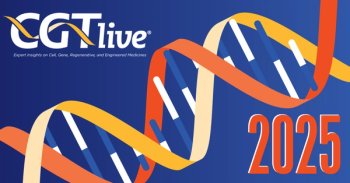
High Dose CAR T-19 May be More Effective than Low Dose in Patients with CLL
Researchers found that a high dose of CAR T-19 may be more effective than a low dose at inducing a complete response without excessive toxicity.
A study published in the Journal of Clinical Oncology suggested that in patients with advanced chronic lymphocytic leukemia (CLL), a high dose (5 x 108) of CAR T-19 may be more effective than a low dose (5 x 107) at inducing a complete response (CR) without excessive toxicity.
However, the researchers also indicated that attainment of a CR after CAR T-19 infusion, regardless of cell dose, is correlated with longer overall survival (OS) and progression-free survival (PFS) in patients with relapsed CLL.
“To our knowledge, the study we report here represents the largest cohort of prospectively enrolled patients with CLL to receive CAR T-cells and with the longest follow-up,” the authors wrote. “We sought to determine an association of cell dose with response or toxicity in CLL.”
Between January 2013 and June 2016, researchers enrolled 42 patients with relapsed or refractory CLL and 38 were infused with anti-CD19 CAR T-cells (CAR T-19). Of this cohort, 28 were initially randomized to receive a low or high dose of CAR T-19, and 24 were evaluable for response assessment.
Following an interim analysis, 10 additional patients received the high dose and 8 were evaluable for response. Moreover, patients were followed for a median of 31.5 months (range, 2 to 75 months).
At 4 weeks, the complete and overall responses for the 32 evaluable patients were 28% (90% CI, 16% to 44%) and 44% (90% CI, 29% to 60%), respectively. Further, the median OS for all patients was 64 months, and there was no statistically significant difference between low- and high-dose groups (P = 0.84).
Regardless of dose though, prolonged survival was seen in patients who achieved a CR versus those who did not (P = 0.035), with median OS not reached in patients with CR versus 64 months in those without CR. Additionally, the median PFS was 40.2 months in patients with CR and 1 month in those without a CR (P < 0.0001).
The most common treatment-attributable adverse events (AEs) were cytokine release syndrome (CRS) (63%) and leukopenia (92%), and 53% of patients had grade 3 or 4 lymphopenia. Of the 24 patients given the high dose and 14 given the low dose, the median number of adverse events was 6.5 (range, 1 to 25) and 10.5 (range 2 to 29), respectively (exact Wilcoxon test P = 0.24). In addition, the number of grade 3 to 5 adverse events was also not statistically different between the groups (high dose group: median, 2.5, range, 0 to 12; low dose group: median, 3.0, range, 0 to 11; P = 0.39).
Importantly, there were no treatment-related deaths within the first month of infusion. However, 1 patient in the low dose group died at approximately 3 months with progressive disease and 1 patient in the high dose group died at 2 months of pneumonia and progressive disease. Of 13 patients in the low dose group, 4 had grade 3 or 4 infection and 3 had grade 1 or 2 CRS or fever. Of 19 patients in the high dose group, 5 had grade 3 to 4 infections, 1 had a second malignancy, and 5 had grade 3 to 4 CRS.
Given these collective findings, the researchers suggested that strategies to further increase the CR rate to CAR T-cells in CLL are warranted and may be supported by optimization of dose and scheduling.
“Other important strategies could include prospective selection of patients who are most likely to benefit from CAR T-cells, such as those exhibiting a CD27+PD-1-IL-6R+CD8+ T-cell phenotype, or rationally combining CAR T-cells with small molecule inhibitors,” the authors wrote.
Reference:
Frey NV, Gill S, Hexner EO, et al. Long-Term Outcomes From a Randomized Dose Optimization Study of Chimeric Antigen Receptor Modified T cells in Relapsed Chronic Lymphocytic Leukemia. Journal of Clinical Oncology. doi:10.1200/JCO.19.03237.
Newsletter
Stay at the forefront of cutting-edge science with CGT—your direct line to expert insights, breakthrough data, and real-time coverage of the latest advancements in cell and gene therapy.




